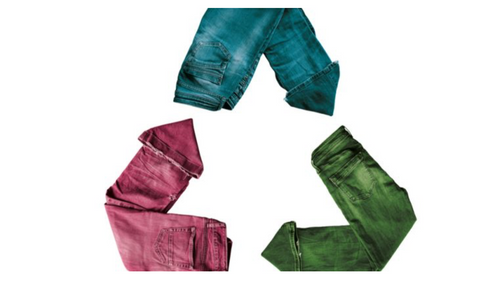Sustainable Fabric Production For Swimsuits And Clothing
Explore how sustainable fabric production transforms the fashion industry, fostering eco-friendly swimsuits and clothing for a greener future.
The fashion industry has witnessed a robust shift toward sustainability and environmental responsibility in recent years. This transformation is particularly evident in the production of swimsuits and clothing, where eco-friendly fabric is rising. Sustainable clothing materials, including natural fabric clothing, are not just a trend but a necessity in the battle against environmental degradation. These materials offer an ethical alternative by reducing waste, conserving natural resources, and minimizing the carbon footprint associated with production. In this blog post, we will explore the concept of sustainable fabric production and its impact on the fashion industry.
What is Sustainable Fabric Production?
Sustainable fabric production refers to the manufacturing process of textiles that have a minimal negative impact on the environment. It involves using eco-friendly materials, reducing waste, and conserving resources during all stages of production. This includes sourcing raw materials, processing them into fabrics, dyeing, printing, and finishing.
Eco-Friendly Materials Used in Sustainable Fabric Production
There are various eco-friendly materials used in sustainable fabric production. These include:
- Organic Cotton: This is cotton grown without harmful chemicals and pesticides that can harm the environment and human health.
- Hemp: Hemp is a versatile plant that requires fewer resources to grow and produces strong, durable fibers.
- Bamboo: Bamboo is a fast-growing plant that requires minimal water and pesticides, making it a sustainable alternative to traditional cotton.
- Recycled Polyester: This is made from recycled plastic bottles, reducing the need for new raw materials and diverting waste from landfills.
The Rise of Sustainable Swimsuits and Eco-Friendly Swimwear
The fashion industry's pivot towards sustainability has given birth to a new era of sustainable swimsuits and eco-friendly swimwear. Brands specializing in these eco-conscious alternatives are leading the way in demonstrating how we can enjoy the sun, sea, and surf without harming the planet.
Best Sustainable Swimwear Brands
Consumers are presented with various brands prioritizing environmental responsibility in the quest for the best sustainable swimwear. These companies use fabrics from recycled materials, such as fishing nets retrieved from the ocean, significantly reducing marine pollution. Furthermore, they adopt ethical practices in every facet of their production process, ensuring minimal impact on the planet.

Integrating Sustainable Clothing and Eco Clothing into Everyday Fashion
Sustainable clothing and eco clothing are not limited to swimwear. The movement encompasses all aspects of our wardrobes, encouraging a holistic approach to fashion that respects the environment and promotes a more sustainable lifestyle. Consumers can significantly reduce their ecological footprint by choosing garments made from organic or recycled materials.
Final Thoughts on Sustainable Fabric Production for Swimsuits and Clothing
The shift towards sustainable fabric production in the fashion industry marks a significant step in the right direction for environmental conservation. By investing in sustainable swimsuits, eco-friendly swimwear, and other sustainable clothing options, we make a style statement and a commitment to protecting our planet for future generations.

The Impact of Sustainable Fabric Production on the Fashion Industry
The fashion industry has long been criticized for its adverse environmental impact, with textile production being one of the biggest culprits. However, sustainable fabric production is changing this narrative by reducing the industry's environmental footprint.
Firstly, these eco-friendly materials used in sustainable fabric production do not contain harmful chemicals and pesticides, making them safer for farmers, workers, and consumers. This not only protects human health but also supports fair trade practices.
Secondly, using renewable resources and reducing waste, sustainable fabric production helps conserve natural resources and reduce the industry's carbon emissions. This is crucial in the fight against climate change and the depletion of our planet's resources.
Moreover, as consumer demand for sustainable fashion increases, more brands incorporate sustainable fabric production into their practices. This positively impacts the environment and promotes transparency and ethical standards in the industry.

Conclusion
The rise of sustainable fabric in swimsuits and clothing is a big leap for fashion's green efforts. It focuses on eco-friendly materials and methods, cutting down on environmental harm. This movement also leads to ethical fashion. Now, consumers can pick products that match their beliefs. This boosts demand for green choices and pushes more brands towards sustainability. With ongoing innovation, sustainable fabric production aims for a healthier planet. It shows that fashion can be stylish and eco-conscious simultaneously.


